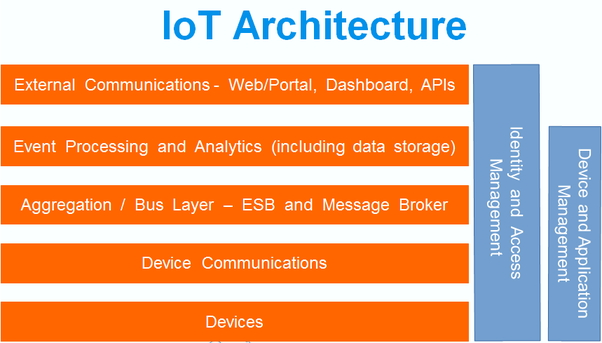
Iot Introduction
What is IoT:
IoT is a network of physical devices, including things like smartphones, vehicles, home appliances, and more, that connect to and exchange data with computers.
Table of Contents
So the Internet of Things or IoT basically is connecting Embedded systems to the internet. The term Internet of Things (often abbreviated IoT) was coined by industry researchers but has emerged into mainstream public view only more recently.
IoT systems allow users to achieve deeper automation, analysis, and integration within a system. They improve the reach of these areas and their accuracy. IoT utilizes existing and emerging technology for sensing, networking, and robotics.
At present only Mobiles, Computers, Tablets and Smart TV is connected with internet. By using IoT all the devices (Eg:- coffee makers, A.C, Washing machines, Ceiling fans, lights almost anything you think of) have sensors that can be connected to the internet.
IoT Application Architecture:
Diagram for IoT Architecture as follows:
- The bottom-most layer consists of your “devices” or “things”.
- On top of the devices is the “device communication layer”. devices can communicate with each other or upper layers using this layer.
- the third layer from the bottom is the “aggregation” layer. A message broker (depending on the protocol used: like MQTT, CoAP, XMPP, AMQP etc) will generally be present here. All the data gets accumulated and forwarded to the respective destination by the broker.
- Nest, you will have an “event processing” layer. This is generally the “cloud”. The data can be stored, analyzed, and processed here.
- The topmost layer is the “external communications” layer. a human being can communicate with the devices using this layer. this may be with the help of dashboards and apps.
- additionally, Identity and access management is required on all the layers. This is to identify who all are accessing the data and if they have permission to do so.
- Finally, device and application management is needed to see if the devices are working according to their design and if the application is working as intended.
IoT Advantages and Disadvantages:
Advantages:
- Automation of daily tasks leads to better monitoring of devices
The IoT allows you to automate and control the tasks that are done on a daily basis, avoiding human intervention. Machine-to-machine communication helps to maintain transparency in the processes. It also leads to uniformity in the tasks. It can also maintain the quality of service. We can also take necessary action in case of emergencies. - Efficient and Saves Time
The machine-to-machine interaction provides better efficiency, hence; accurate results can be obtained fast. This results in saving valuable time. Instead of repeating the same tasks every day, it enables people to do other creative jobs. - Saves MoneyOptimum utilization of energy and resources can be achieved by adopting this technology and keeping the devices under surveillance. We can be alerted in case of possible bottlenecks, breakdowns, and damages to the system. Hence, we can save money by using this technology.
- Better Quality of Life
All the applications of this technology culminate in increased comfort, convenience, and better management, thereby improving the quality of life.
Disadvantages:
- Loss of privacy and security: As all the household appliances, industrial machinery, public sector services like water supply and transport, and many other devices are connected to the Internet, a lot of information is available on it. This information is prone to attack by hackers. It would be very disastrous if private and confidential information is accessed by unauthorized intruders.
- Compatibility: As devices from different manufacturers will be interconnected, the issue of compatibility in tagging and monitoring crops up. Although this disadvantage may drop off if all the manufacturers agree to a common standard, even after that, technical issues will persist. Today, we have Bluetooth-enabled devices and compatibility problems exist even with this technology! Compatibility issues may result in people buying appliances from a certain manufacturer, leading to its monopoly in the market.
- Complexity: The IoT is a diverse and complex network. Any failure or bugs in the software or hardware will have serious consequences. Even power failure can cause a lot of inconveniences.
- Lesser Employment of Menial Staff: The unskilled workers and helpers may end up losing their jobs in the effect of automation of daily activities. This can lead to unemployment issues in society. This is a problem with the advent of any technology and can be overcome with education.
- Technology Takes Control of Life: Our lives will be increasingly controlled by technology and will be dependent on it. The younger generation is already addicted to technology for every little thing. We have to decide how much of our daily lives are we willing to mechanize and be controlled by technology.
Hope this article helps you to learn an overview of IoT.
